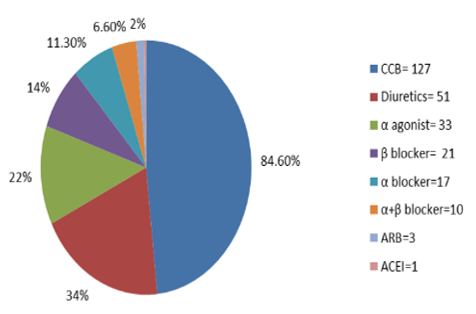Abstract
Cost effectiveness analysis branch of pharmacoeconomics is a technique used to aid in decision making between alternatives. A prospective observational study would be conducted in the nephrology department at O.P, Patients with CKD with hypertension, with or deprived of diabetes are included in the study. Patients with drug-induced renal disease or unknown cause. Pregnant women with chronic kidney disease are excluded from the study. The research was conducted in150 patients in which common are men. The mean age of the research people was found to be 51.2 ±7. 02. It was observed that calcium channel blockers 127 (84.6%), diuretics 51 (34%), α agonists 33 (22%), β blockers 21 (14%), α blockers 17 (11.3%), α+β blockers 10 (6.6%), Angiotensin receptor blockers 3 (2%) and angiotensin-converting enzyme inhibitors 1 (0.6%) were the numerous antihypertensive drugs given to the study people. Incremental Cost-Effectiveness Ratio was assessed, and it was observed that Rs.31.80 was extra required while using diuretics than Calcium Channel Blockers for achieving respective maintenance value. The major classes of antihypertensive drugs prescribed in all of them are CCB+α agonist was found most effective CCB+ Diuretics were the second most effective. Incremental Cost-Effectiveness Ratio was calculated, and it was found that Rs.4.40 was Extra needed to attaining essential upkeep of blood pressure. Pharmacoeconomic study shows that Calcium channel blockers were the utmost cost-effective antihypertensive in CKD patients when linked to other antihypertensive drugs. In two-drug combination therapy, CCB+α agonist was found most effective.
Full text article
Authors

This work is licensed under a Creative Commons Attribution-NonCommercial-NoDerivatives 4.0 International License.

